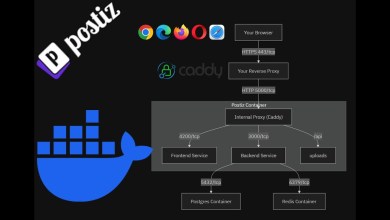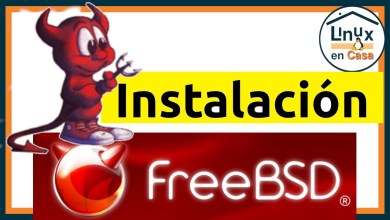Breaking the Stigma: Why Universal Apps are GREAT for Linux
What are Universal Apps? Why do they stir up so much controversy?! In this video, Jay explains what universal apps and makes the case that for user-space apps, it’s the way to go going forward.
*LEARN LINUX TV – YOUR HOME FOR LINUX-RELATED FUN AND LEARNING!*
Support Linux Learning and check out Netdata, a powerful utility that enables you to easily and proactively monitor your business, home, or homelab network
• Check out Netdata here ➜ (affiliate revenue earned)
*🎓 BRAND NEW UDEMY COURSES AVAILABLE!*
Check out my new courses on Udemy and learn something new!
• Getting Started with Ansible ➜
• LPI Linux Essentials Complete Workshop ➜
*🐧 SUPPORT LINUX LEARNING!*
• Monitor your Linux servers with Netdata ➜
• Grab some Linux swag ➜
• Become a Channel Member ➜
• Become a Patron ➜
• 5% discount on LPI exam vouchers ➜
• Check out my latest book ➜
• Grab an awesome Pi-powered KVM ➜
• Jay’s Gear – Server, Computer and Video Production Stuff ➜
_Note: Royalties and/or commission is earned from each of the above links_
*🎓 FULL LINUX COURSES FROM LEARN LINUX TV*
• Linux Crash Course ➜
• Learn tmux ➜
• Learn vim ➜
• Bash Scripting Series ➜
• Proxmox VE ➜
• Getting Started with Ansible (Udemy) ➜
• LPI Linux Essentials Workshop (Udemy) ➜
*🕐 Time Codes*
00:00 – Intro
01:37 – Why Linux packaging sucks for developers
02:58 – Snap packages
04:03 – There’s some controversy surrounding snap packages
04:34 – Flatpak
05:47 – AppImages
06:34 – Check out the updated merch shop
07:26 – Why is there controversy surrounding universal apps?
09:34 – Universal Apps are AWESOME
*🎬 Related Videos*
• AppImage Tutorial ➜
• FlatpakTutorial ➜
• Snap packageTutorial ➜
*📘 FAQ*
• What is a “Distribution” of Linux? ➜
• What is a “Desktop Environment”? ➜
• Which Server Distro should I use? ➜
• How do I create USB install media? ➜
• How do I create multi-boot USB media? ➜
• How do I connect to a server via SSH? ➜
• How do I exit vim? ➜
• How do I use APT? ➜
• How do I use DNF? ➜
• How do I use pacman? ➜
• How do I use zypper? ➜
• What is a “Flatpak”? ➜
• What is a “Snap” package? ➜
• How do I install Arch Linux? ➜
• How do I configure SSH on my server?
• How do I install updates? ➜
• How do I secure my Linux Server? ➜
• How do I use LVM? ➜
• How do I use Git? ➜
• When will the “Year of the Linux Desktop” Happen? ➜
• Do you have a sense of humor? ➜
*🌐 LEARN LINUX TV ON THE WEB*
• Main site ➜
• Community ➜
• Official Github Account ➜
• Enterprise Linux Security Podcast ➜
• The Homelab Show Podcast ➜
• Jay on Udemy ➜
• Jay on Twitter ➜
• Content Ethics ➜
• Request Assistance ➜
*⚠️ DISCLAIMER*
Learn Linux TV provides technical content that will hopefully be helpful to you and teach you something new. However, this content is provided without any warranty (expressed or implied). Learn Linux TV is not responsible for any damages that may arise from any use of this content. Always make sure you have written permission before working with any infrastructure and that you are compliant with all company rules, change control procedures, and local laws.
#LinuxApps #Flatpak #Linux
[ad_2]
source



In my rather new-to-Linux opinion, Universal Apps are one of the more important things for pulling some Windows users over to Linux. I may be able to install drivers here and there with the terminal, but very few people i know who use Windows could. Something closer to an exe installer is something more window users would understand how to use.
A very good explanation of what and why. I'd heard of the snap vs flat pack war but not heard of app images before.
Are any of them similar to the way apps on MacOS work?
Great video! I know that is a different concept but what do you think about Nix package manager and NixOS?
That's not how it works.
First: typically you produce one deb file: or, if you produce a popular app, one packet maintainer in Debian or in Ubuntu produces one deb file for you for free. Then this deb file can be directly installed on about 50% of all distros, and the fedora distros produce it for you by converting it by alias. Now you cover about 90% of the distros. Flatpack and snap are separate installation systems that lazy and sloppy program providers provide extra. I think Ubuntu is peddling some more proprietary/unsecure stuff here.
Secondly: the problem for developers is rather a problem of discipline: they really need to link oldish library versions in order to be compatible with the numerous oldish distros, in particular debian, that is about 1.5-2 years old, since they are releasing in a very slow rate. But that shouldn't be too hard, should it? Just use Debian when you develop.
I hate snaps because of how they are used. If i tell apt to install Firefox, it should be the Firefox from the repo that's installed. It should only install stuff from snapstore if i tell it to.
I never understood the complaint about devs needing to create packages for multiple distros. Packaging isn't strictly necessary.
It was always possible to just release a binary tarball. The overall experience is not that different from using an Appimage.
Petty nitpick, but if you are going to use something for background eye-candy in a video, btop is the way. htop looks like the 90's thew up all over it.
The one thing I love about Linux is that I have the freedom of choice. I appreciate having the choice of using flatpak, pacman and the aur. Instead of limiting our choice to 1 platform I beleive that you should allow the developer to make their own choices.
So if the developers of firefox only want to release flatpak packages then let them.
The best argument against using universal apps when it is not really required: performance and ease of use. For those reasons alone I strongly favor regular packages. Yes, in niche cases you can get a dependency hell, use an alternative solution for that, be it one of those universal apps or some containerization. Fine by me. But let's keep using regular packages as the default.
The space-problem has become less of an argument, though it is wasteful I acknowledge that it becomes a little bit silly to complain about that. It was a valid argument when you spent $100 on 250/500 GB (while you always got less). With a 2 TB SSD for $100-150 it is a less valid complaint. I used a '500' GB (more like 460 GB) back in the days, it was rough! Then you really don't want to waste any memory. Yes, most of us could also free up space by removing old logs and I am guilty of that too. But that is not comparable to how much memory Snap/Flatpak/AppImage wastes. My entire var/log-directory contains 1.1 GB and this system is at least 2,5 years old. With the argument that most of us don't maintain that properly you show some hypocrisy for some of the people who use the memory-argument but it doesn't make the argument less valid on itself though it has become much less of a problem because most people now use at least a 1 TB SSD for their system and home-directory.
With open source software that developer doesn't have much work with all the different distributions, just give clear instrucitons for compiling it from source and the packager for the distribution will package it. Easy, right? The problem is when there is proprietary software, then the developer has to take on all that work or figure out another solution, that is where an AppImage or Flatpak comes in, for me anyway. Snap is off the table for me: it still performs worse, the server-side is proprietary and Canonical is too much a zealot with it. Between AppImage and Flatpak I consider AppImage considerably more userfriendly (just download it and start it) while Flatpak as the advantage that you can in theory make it more secure. In summary: best just a regular package, if not possible then either AppImage or Flatpak, AppImage if you focus on userfriendliness.
Thank you for bringing the topic of universal apps. This is clear for me that Linux won't move forward without universal acceptance of a universal app format. But I would like to know more about technical specificities and differences between Snaps and Flatpaks. Just straight forward, which one is better from technical point of view.
Tbh I don't use very many universal apps, but it's definitely a next step in the linux desktop space and is already being embraced. I think it's good
I don't know much about these universal packages. Do they run slower than an app installed directly with the regular package manager?
>Be okay w/ bloat because storage is cheap now.
Nah.
Native sysyem packages over my dead body.
Storage and internet bandwidth are cheap. Universal apps are the way to go.
When I downloaded stuff on Arch, I first check the official repository and install packages using Pacman in the terminal.
That's the intended way of installing and uninstalling packages on Arch, and I have no reason to complain when it works.
If I can't find something there, however, I usually check the Arch Wiki, which usually points me in the right direction. Either to the official packages, that I most likely missed, or ones in the Arch User Repository. In that case, I use yay to install AUR packages and perform general system updates.
If that's no help, then I check the programs official site for downloaded options, which usually ends with me downloading a FlatPak or AppImage, or in worst cases, messing with Bottles, Wine, and/or Lutris.
I'm sorry, but I won't use Snaps while they are curated by a proprietary entity.
Would you consider nix packages as "universal apps"?
Installing nix is easy and you can just "nix-shell" with whatever one time thing you want or install in profile when you want it always available… then it "don't waste space" since it builds upon it's own dependencies, update everything in one command and finally clear the store and reclaim a lot of space from unused stuff
Yes, you can use declarative ways to have everything… but in the most basic usage… just nix-shell for one-of uses or nix-env/nix profile to have it "installed" always
I use majority system packages with a bunch of flatpaks. The only thing i dislike about Flatpak is that on flathub especially not all the packages seem to be officially from the devs of said software and that feels a bit sketchy I only download flatpaks if it's verified or if the devs themselves link to or suggest the flathub version. Same reason I didn't always trust AUR downloads unless I could check the uploaders name was the same as people on the dev team. Ultimately people like system packages because they are vetted and I'm unsure how much vetting goes into the snaps and flatpaks.
The single advantage i see for SNAP packages is that they are used to package command line apps as well as GUI apps.
Im not sure ive seen a server-related Flatpak or AppImage…but they may be out there.
A lot of what devs and distro maintainers like about Linux is the community and feeling like they have a place somewhere they fit in. I'm not against universal apps, but if everything is streamlined in this way, thousands of people are going to be pushed out of doing what they love.
Universal apps are a great idea on paper, but are terrible in practice. Well, appimages are okay, but I've had nothing but problems with flatpak and snap. Besides just taking up more space (and it's not just a few megabytes, it's gigabytes more for the runtime and all the duplicate libs), they're sluggish, take much longer to load, and are basically cutoff and isolated from the rest of the system. The themes are one of several symptoms of this problem. If you want to use them, go right ahead, that's your choice. But, I have no intention of ever using them again. I'm perfectly happy with the way things have been successfully working for decades, until a better solution comes along. But these aren't it.
A mousepad that doubles as a tmux cheat sheet? That’s genius.
thanks for bringing me up to speed JAy on these new formats in my opinion flatpack is defenatly the way to go! im running Mint Deb edition if you loved Windows 7 and agree that was thier peak this Distro is for YOU! its the perfect blend of Win 7 fuctionalty and still looks like linux it uses flatpacks out of the gate
keep up the great videos ! im actully playing around with Vim here and there becase of said videos iom that is a VERY GEEKY editor lol
If you have a different theme and a different cursor theme then on all packages, snaps, flatpacks etc are not following the theme and it is infuriating. We want users to use linux but the desktop experience is atrocious.
you videos certainly help & equally, tell me how much I have to learn, which brings to mind, can all three be run on the same distribution?
Can we stop using the "storage is cheap on Amazon" argument, please. Not everyone lives in the US/West and has the luxury to spend $25. $25 might be too little in the West, but it sure is a lot of money in so many countries.
pacman is the best
The problem I have with them is because they tend to slow my system
I faced quite an annoying problem with flatpaks, and since then I have been put off by the concept of flatpaks. When I use an application with a flatpak it does not get access to mDNS, and because of that you are unable to resolve IP addresses using local host or local domain names. For example, when I install brave browser from a flatpak, I couldn’t access my local network devices with their domain names. I could not open any webpages using their domains on my local network. I had to use an IP address which I need to remember all the time which caused a great deal of frustration to me, and I started to dislike flatpaks because they felt so unfinished.
Jay personally i just obey to you because you are my Linux God. I dont even think. If you say so, its because its true. <3